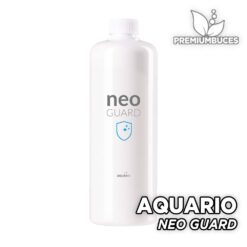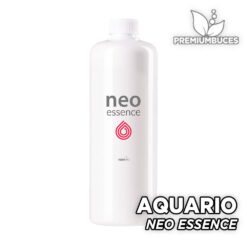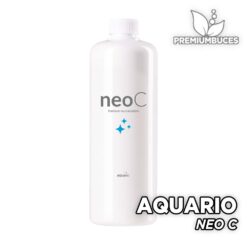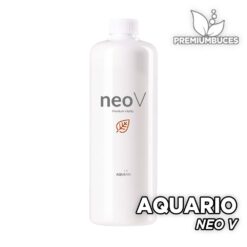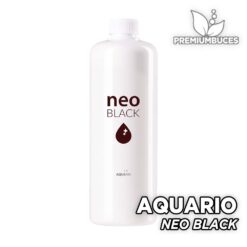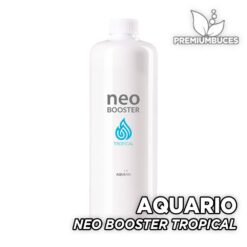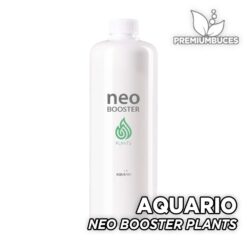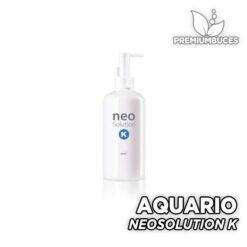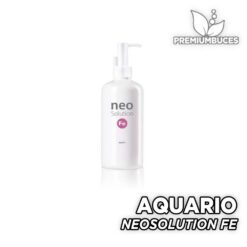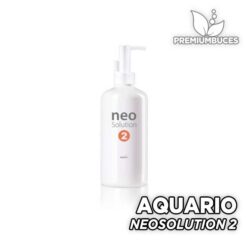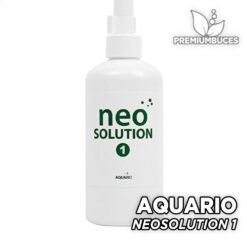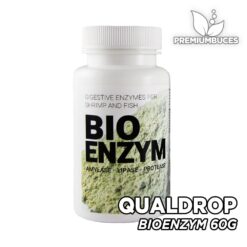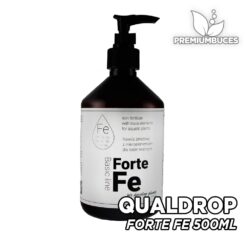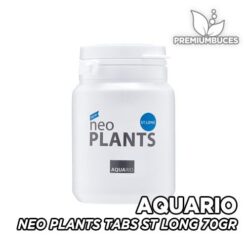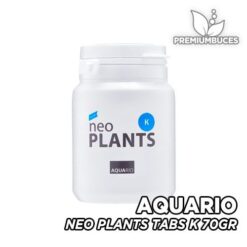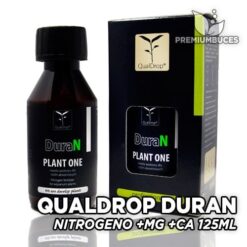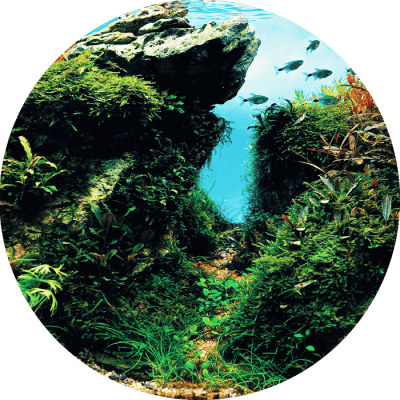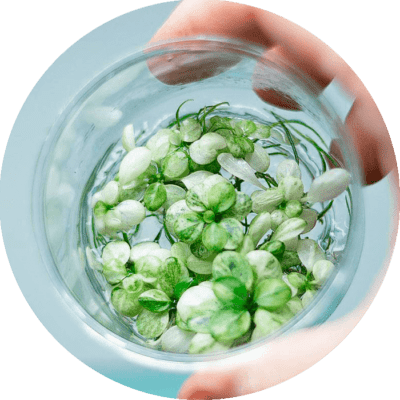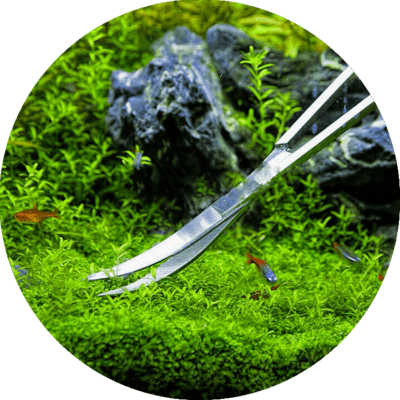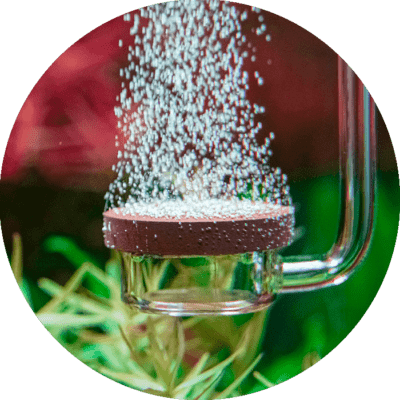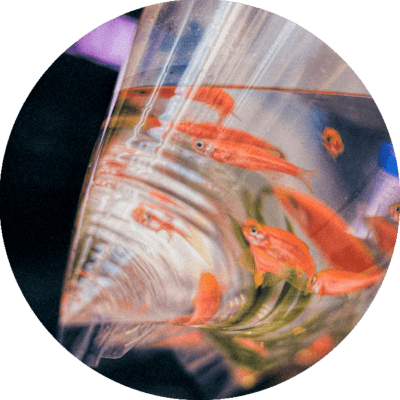Know what are the tricks to maintain our aquarium clean, healthy and perfect in order for the fish to live well is the key to being a good food lover aquarium world.
En Premium Divers as true fans from all over the world, and for that reason we care enormously because all the people who have an aquarium with different types of fish and plants and mosses, have, in addition to quality products, all the necessary information at your fingertips. Information is essential when a person decides to start in this area: we have to know what fish need, how it is done so that they live well, so that the plants grow and so that the water where they all cohabit is in the best conditions.
One of the issues that most bring up everyone who has aquariums at home is the subject of chemical compositions and water parameters. Sure you know, but sometimes not only is it enough that the water looks good, is crystal clear or simply that we change it and clean it often.
The water has lots of variety of different chemical compounds, and in fact there is a great difference between some waters and others. To this is added that the fish are reared and adapted to the chemical characteristics of the water in their place of natural origin, and that they are not able to stay healthy in any other water.
Thus, the parameters of the water in our aquarium is a fundamental issue for the success of our project, and although it may give us a certain tedium to have to worry about this, we already warn you that there is no possible way to have a good aquarium without thinking about the water parameters. Today we are going to talk to you about this topic, so that you have in the most syntactic and best explained way possible, all the information that we know, and that make the aquarium to be perfect.
DIFFERENCES BETWEEN THE TYPES OF WATER IN EACH LOCATION
It often happens that when someone has never owned an aquarium, they absolutely take it for granted that what to do with it is fill it with the water we have on hand and that's it. Thereafter clean it and change the water, and in this way fish and plants will be perfectly.
Nothing is further from reality! The water that is going to be the living space of all these living beings that we will acquire, has to be a special water, specific and with specific characteristics Thought out for each species we choose.
You may know that the tap water we drink is chemically treated so that it is drinkable and does not cause us any type of infection or health problem.
Normally what is usually put into the water to make it drinkable it is chlorineEither chloramines. But it is that, in addition, in each specific place of our country and the world, the amounts of chlorine or chloramines with which the water is treated are highly variable.
Surely you have been on vacation in another city or community other than your usual one, and you have noticed a big difference in the taste of the water. There are some that have much more lime, others that have less and have a more natural flavor, and others that directly they are not recommended to drink because they are not treated enough.
All these small details that are taken into account for ourselves and our well-being, too you will have to check them once you have decided to buy an aquarium. So, although of course the water that you will end up using to fill the place where your fish will live, it will be from snout and you will not have to buy a specific one, you will have to measure all parameters y take into account what you need to make it a place where fish, and also plants, are at ease.
WHEN SHOULD WE CONCERN ABOUT THE WATER PARAMETERS?
As we have already told you at the beginning of the article, the water parameters they are something that we are going to have to worry about all the time. This obviously does not mean that we will have to go through every minute measuring if there has been any change, but in an orderly way we are going to have to measure parameters routinely, and of course pay special attention when in the aquarium there is any change.
Many people believe that the moment you have to worry about water parameters of our aquarium is when, precisely, these changes arrive. For example, we have decided put in a new species of fish, or plant in an aquarium already formed.
This, in fact, is true, because every time a new species enter the aquarium, we will have to worry about acclimatization of the fish to the aquarium, and be very attentive to his way of acting, as well as the appearance and water meters. Each species of fish needs specific characteristics, although there is some that adapt quite well to any type of water, which makes them perfect to be mixed, as is the case with the guppies, about which you can read if you click on this link.
But what have we achieved the perfect parameters to acclimatize the new inhabitants you do not have to relax and forget this topic anymore. Every time we go to clean the aquarium, which is more or less, depending on the size, every ten days or two weeks at most, we will have to go back to worry about the parameters and that everything remains in order and exactly the same as we had before we started cleaning.
Although now we will develop more carefully what are all these parameters and how to get to know about them, the best idea is always ask the experts. In the store where you go to buy the fishEither some decorative elements of the aquarium, they can talk to you about this topic and also in a much more personalized way, because they will take into account the particular characteristics of the water in the city or municipality in which you live.
Another great question is if we must worry about these water parameters already when we have the aquarium mounted, with the fish inside, or if on the contrary it will be something that we have to take into account from minute one. Well, effectively, the parameters will be something you will have to be aware of long before starting the aquarium. And this is because the first process that is done when we acquire an aquarium, basically consists of measure certain parameters.
The cycling of the aquarium, one of the first points to take into account
In the next point of the article we are going to tell you in more detail what are the aquarium parameters, but if it is not the first time that you read something about aquariums, you will have guessed that this whole topic is about the chemical composition of water, and that there is indeed two chemical compounds on which we will have to act as soon as we acquire the aquarium:
These compounds are nitrites and nitrates, and how they should become nitrogen for the welfare of our fish. On the blog already We have talked more specifically about this topic, which is none other than the most important process when starting an aquarium, with aquarium cycling, about which we tell you everything in this article.
El aquarium cycling consists basically in the following: decomposition that is caused in water, due to food scraps and fish droppings, fill the aquarium with chemical elements such as nitrites and nitrates that are harmful to the health of fish. This process which is the aquarium cycling, is what we have to do first of all to get it to be the aquarium water itself which converts these nitrites into nitrogen, which is an element that does not harm the health of our pets.
This chemical conversion, it is done thanks to a biological filter, what is a indispensable element in our aquarium. In Premium Divers have a biological filter section that you must acquire before considering putting the fish inside. The aquarium cycling will be by pouring fish food scraps into the water and letting two types of bacteria are created in the filter, nitrosomes and nitrobacter, to be more specific. They convert nitrite to nitrate, and then in nitrogen, finally making the aquarium a habitable place.
The process will take about two weeks, more or less, and it is essential so that the fish do not get sick. Yes indeed, this cycling is not a substitute for cleaning the water what you must carry out every ten days.
THE FIVE PARAMETERS THAT WE MUST CONTROL TO MAINTAIN OUR AQUARIUM
Now that we know a example of how parameters are important to consider right out of the box, let's talk what are the other parameters of the water that we have to watch. We are also going to tell you some examples of these parameters in specific aquariums:
THE HARDNESS OF WATER OR KH
El Aquarium water first parameter The one we want to talk to you about is one of the most important, and what is most related to all general characteristics of water that mean that it is of quality: this is the hardness of the water or commonly called KH.
There are two parameters within the water hardness. First is the general hardness, which is called GH, and secondly the hardness referred to carbonates, which is the KH. Knowing in a technical way what exactly all this means, we believe that it can make a mess about what is really important, so we are going to tell you about this in a simpler way: the hardness of the water is basically the concentration of minerals that is inside it. The carbonate hardness refers to, in turn, the resistance capacity of water to changes in pH, which is another of the most important parameters and which we will talk about below.
Many aquarium experts and lovers and all that these entail, they ensure that having GH and KH regulated is the most important thing for things to go well in our aquarium, and no fish get sick or die. This is so because it is useless, for example, regulating the PH if the KH is too low or too high.
HOW CAN WE LOWER OR RAISE THE KH PARAMETER?
The first thing you have to know is why and under what circumstances would we need to increase or decrease the water hardness parameter. When you acquire knowledge about aquariums you will understand it well: when one is done with a new species of fish, you have to find out everything about it, mainly how are the circumstances of the water of its natural habitat. Thus, we will find out that certain types of fish need hard waters (with a high concentration of minerals, and also that they are very alkaline) and others need soft waters, and that if you put a fish that prefers hard water in a soft one, it is possible that it will not finish feeling well and will get sick.
Based on this, and based on what are the characteristics of the running water of the place where you live, you will have to use specific and external products to raise or lower the levels of the aquarium parameters.
So, speaking of more general features, the recommended minimum of KH is 4, and this is applicable in any case, with any type of fish or to be alive. What can we do if we have less than this amount? Or what can we do in case we have a species of fish that needs water with a KH value greater than 7, and we only have 5? Well upload it, and for this they exist specific products in specialized stores, for example in our store, Premium Divers. In the same way it will happen if we have a KH too high and you have to lower it, that we can find a product for it.
There are some rumors that it can be cast common salt in aquariums to increase GH and KH parameters, But that's not true, since salt is composed of sodium and chloride and neither of these have anything to do with the rise in these parameters. However, an emergency trick if need increase KH (and also the PH, as we will see below) and we do not have the necessary product for it, it is add a little baking soda.
It is important that you know, although surely you have already deduced it, that the way to find out that something is wrong in the water parameters it is not only observe the behavior of the fish (although this is often the first warning sign that makes us look for the reasons and, in this way, find the parameter that has been triggered), but measure it by a test.
THE PH OF WATER
El PH value, which is another of the most important, shows us the acidity and alkalinity of the water from our aquarium. This data, which perhaps does not sound like too much to you, you have to analyze it in the following way: the more acidic the water, the PH value will be much lowerWhile the more alkaline it is, the PH value will be higher.
This means, broadly speaking, that acidity is negative and alkalinity is positive, and that we must maintain some minimum PH levels in the water so that our fish live correctly.
Each species of fish, and also of plants, is a world, and there are some species that are very strict with the PH level they need, while others know how to adapt better to any water condition, but let's say that, in general, the minimum PH that must be maintained yes or yes is 6.
When we say that the minimum is 6, we mean the minimum so as not to enter big problems with aquarium water that endangers life within it. TO PH levels less than 6, not only will the water be very acidic and this will harm the fish, but it will also will affect the bacteria that live in the biological filter, and it will make them disappear.
What would happen then? Well yes filter bacteria disappear, they will also stop convert some chemical compounds into others, and will stop helping in the process of giving health to the water. This will lead to the water becoming a place incompatible with life, the fish will get sick and, in the worst case, will die.
HOW CAN THE PH LEVEL OF THE WATER BE RAISED?
With this we want to tell you again that water parameters must be taken very seriously. Then you may be wondering what can we do if we find the PH level too low, and the answer is that we will have to upload it ourselves:
To know the PH level that the water has and to know if we should raise it, first we have to know the KH level or water hardness and raise this. The KH rises thanks to specific products which are precisely additives and help us to improve our levels in the aquarium water. In this link you can find all the fertilizers and additives that we have in Premium Divers, where you will actually find products to raise the level of certain parameters in the water. Typically with the rise of the KH level, the PH will rise only. If not, there are specific products to also raise the PH: for example some product of the type of JBL-Ph-Plus.
It is also possible that what we want is lower the pH of the water, in which case what we will have to do is, again, check the KH value to try to lower it, and if not, we will have to provide CO2 inside the aquarium. He CO2 is normally added to nurture our plants, so you can use it for both things at the same time. Here you can buy CO2 in our section of the online store.
REASONS WHY WE WANT TO RAISE OR LOWER THE PH LEVEL OF THE WATER
Are you wondering why we should know when the acidity in the water is too low, or we need it to be even more alkaline? Well this it will depend on the species of fish that you plan to put to live in the aquarium.
There are some fish whose natural habitat is in hard waters, that is, very alkaline and with little acidity. This kind of fish they will always need that the pH parameters of the water are high, and if you acquire them, surely you have to do something to raise the PH level of water every time you clean everything. An example of these fish are those of the families of Julodochromis, aulonacara, Melanochromis or Pseudotropheus. Normally, when hard water fish with a need for a very high PH are chosen, they are usually sparsely populated aquariums because they are large and very territorial fish.
However, in the event that we want fish for our aquarium that have always lived in soft water, surely it is flooded amazon rainforest fish, As the Corydoras, of which you can read more in this article, pencil fish or neon fish.
CHLORINE FROM WATER
It is possible that chlorine parameter be the one that sounds the most to you for general knowledge about the elements with which the water is disinfected. Chlorine is a desinfectant which is usually used for neutralize any bacteria in the water that we humans use normally.
Although the consumption of water is not especially good for our health, we are perfectly qualified to be able to consume chlorine in our running water. In fact, all treated water that come out through the taps of our houses they have a little chlorine, and absolutely nothing happens to us.
However, neither fish nor plants suffer the same fate, and for them chlorine is extremely harmful. It is, so to speak, his biggest enemy, and they will not be able to live well in an aquarium where one does not worry about the amounts of chlorine in the water. What's more, they will die fairly quickly, for it's like poison.
So, thanks to certain specific products within the field of aquarism, we can lower chlorine levels and keep it under control. The good part is that it is not a chemical composition that rises due to other elements of the aquarium, so once we have the aquarium with clean water and with minimal chlorine levels, we will not have to worry about it again until next time we clean it up.
And this is where the bad part comes in, because chlorine is in the running water in our houses, and so this will have to be dealt with every time we clean the aquarium, every ten days or two weeks. But nothing happens, because once we have internalized that we must always take this parameter into account, all we have to do is add a water stabilizer to remove chlorine. In Premium Divers we have a product that neutralizes and removes chlorine and other heavy metals harmful in our aquarium, and what you can get if you click here.
NITRITES AND NITRATES IN WATER
We are not going to expand much on this topic, because we have already told you what is water cycling, which is basically in getting down harmful chemical compounds, such as nitrites and nitrates, to convert them into nitrogen and so that fish and plants can have the well-being they deserve.
Thus, this water parameter that form nitrites and nitrates will be the first one you have to worry about, as we have already told you. Long before putting the fish inside, these parameters will have to be absolutely controlled and perfectly managed by the biological filter, which will ensure that they regulate themselves and that they do not need constant intervention on our part.
Of course, in the same way that every time we change the water we will have to observe how is the KH, PH or chlorine in our water, we will also have to do the same with nitrites and nitrates. It will no longer be necessary to know the amount of nitrites or nitrates, but simply measure the amount of nitrogen.
PHOSPHATES IN WATER
The water phosphates They are another of the most important chemical elements that we can find in our aquarium. They are important because they have a enormous prominence in relation to various elements of water: first of all, they are needed to nourish plants and secondly they are also very necessary for the health and proper growth of fish bones.
So the bottom line is that phosphates are very positive for the living beings in our aquarium in maximum quantities, which usually are, to give you an idea, of a maximum of 0,1 mg per liter of water. The problem is that when using products that have phosphates, we can quickly exceed recommended amount, and when there is excess, it can become a more harmful element to consider.
Without going any further, the food of our fish has phosphates. Also, in the event that we do not buy quality food and let's buy some that are usually very cheap, the amount of phosphate will be excessive and you can bring bad consequences to the aquarium. The most common consequence is appearance of large amounts of algae in the aquarium, which as we have told you in other articles, is harmful to plants and clean water.
On the other hand also additives and fertilizers for aquarium plants often contain sulfates. This, added to the sulfate in fish food, usually causes precisely the excess of sulfate we were talking about.
HOW CAN WE LOWER THE SULPHATE LEVELS IN THE AQUARIUM? AND UPLOAD THEM?
In the same way as with the other water parameters of which we have been talking, you will find yourself at some point with the situation that you have to raise the phosphate level so that the plants grow well, and also so that the fish are at ease. This is, however, a much rarer circumstance than having to lower phosphate levels, precisely because of what we have been telling you, that many of the elements that we use in the aquarium will keep the phosphate very active under water.
There is a concrete situation in which it may be that the phosphate is too low and you have to upload it, which is when the plants in the aquarium are lacking in phosphate due to the fact that it is an aquarium with a lot of plants and few fish. Or else it is a shrimp, instead of an aquarium, where do not supply too much food. Here you will only have to use a specific fertilizer for your plants that has a extra phosphate, which will raise the overall levels of the aquarium.
If, on the other hand, what we need is lower the amount of phosphate in our aquarium, we will simply need some product that removes excessive levels of phosphate, and in fact there are those that eliminate both phosphates, such as nitrites and nitrates, and thus we save a quantity of money and time.
OTHER PARAMETERS TO TAKE INTO ACCOUNT
Usually all these parameters of which we have been talking throughout the articles, are the most common and those that we have to consider the most so that the aquarium water is well, and therefore its inhabitants are also well.
but there many other parameters about which we will also have something to learn, and we are going to tell you in a more summarized way here, so that they are also things that you know when you have a problem and must analyze in a general way each element of the aquarium:
-
THE OXIGEN
What is, fundamentally, the engine for fish and plant life from our aquarium. Usually less is said about the importance of oxygen levels because it is a very easy to regulate chemical element: fish need oxygen to live, But plants produce oxygen when in the sun and normally it is worth taking this into account so as not to have serious problems with the amounts of oxygen.
So it is important to know that when the water is too warm and reaches certain temperatures in summer, less oxygen can dissolve in water. To do this, what you have to do is simply aerate the water additionally at these times of the year.
El specific moment to aerate the aquarium water at these times when there are high temperatures is overnight. This is so because plants produce oxygen when the sun hits them, as we just said, but they also consume oxygen at night. So that all is well and the oxygen levels are regulated, just do this when it's hot and you're done.
-
SILICATES
Another of the water parameters that we must know is that of the silicates, also known as silicic acid or silicon. The fluctuation of the levels of this chemical element does not cause havoc as can happen with the parameters that we have been mentioning throughout the article, but we must not get out of control: a large amount of silicic acid or silicates, can cause a problem with diatoms, that is, with seaweed in our aquarium.
To this is added that in recent years, there are certain regions of our country that have seen an increase in the amount of silicates in their waters currents, so it may be more frequent than you think. Therefore, it is best that let's check from time to time how are the silicate levels, and in case they are too high, let's apply a silicic acid scavenger.
-
CO2 OR CARBON DIOXIDE
It is together with oxygen one of the parameters better known by the general population, and also for aquarium lovers in particular. The CO2In short, it is very present in the water of aquariums because fish produce it when breathing, and also from the excess that plants produce of this element at night.
However, the carbon dioxide is also very necessary in an aquarium with plants, as it is the main source of nutrition of this. Thus, in the same way as with the other chemical elements, we must control that there is a fair amount in the water, which rounds the 20 or 25 mg per liter of water.
-
COPPER, IRON AND POTASSIUM
Conclusion other water parameters that we will also have to know. Although normally, when all goes well in the aquarium, it is not necessary to almost notice in them because they only lower or raise their recommended amounts when something happens.
An example of this is, for example, when some of our fish get sick and we have to treat the water for joy contagious disease, like that of velvet, Also called oodiniosis, which can affect the copper levels in the aquarium, and having to use some kind of product to bring them back into balance.
THE DIFFERENCE BETWEEN THE PARAMETERS OF SALT WATER AND FRESH WATER
Finally, we want to talk to you about a topic that is also important and you must take into account, because all these parameters and many others that exist, change when we are talking about fresh water or salt water.
Normally, the vast majority of aquariums that we usually buy for our houses, they have fresh water. This is because almost all fish and plants that can be in our house, in the aquarium, they are of river or lake water, and not from sea. Also, for one a matter of pure practice, many people choose sweet water Why this way they can change it directly with the tap (although as we have learned, taking into account the tap water parameters and balancing them to the taste of the aquarium inhabitants).
In any case, there is aquariums that are salt water. For example, an aquarium to have Jellyfish inside, which is also often called jellyfish. For example an aquarium with certain species of marine fish. In this case, there is a parameter of the water that is specific to this type of water and that is why we wanted to make this differentiation, and this is The calcium.
The element of calcium will only have to be taken into account, as we have just said, if we have a saltwater aquarium. This parameter is part of the general hardness of water, that is, of GH. He calcium in salt water is absolutely indispensable for him growth of the vast majority of invertebrates, and the recommended amount is between 400 and 450 mg per liter of water. In sweet waters; however, not usually analyzed separately from GH.
Moreover, there are also an element that must be specifically analyzed in fresh water and not in salty waters. This is the magnesium, and is also part of the general water hardness, of GH, but in fresh water it is usually analyzed separately by the presence of certain plants that are sensitive to this and they need a determined amount. This determined amount is between 5 and 10 mg per liter of water.
And we have already reached the end of the article! We have tried to speak and expose all most important points to consider when analyzing chemical parameters that has the water that will be the future home of our fish and plants.
As you will see, have an aquarium is a responsibility that we must reflect. It is not possible to have a fish tank, a place where living beings live, without having some minimal care. But scabies gladly does not itch, and when you are passionate about this topic, can measure and know everything necessary for life in the aquarium to reproduce correctly, it is something enriching and fun.
Thus, ask the expertsKnow everything you can about the species of fish you are thinking of acquiring. If it's you first aquarium, it is best that you choose fish that demand little, to be able to give them what they deserve while you are learning, and if you already have some more experience in the matter and you feel like experiment with new species: new ways to start the aquarium, just inform yourself well. When you have learned certain minimal things, As the water parameters and the best ways of cleaning, will be done and checked and it will rarely give you trouble.
For any other question, or explore more about the world of aquariums and fish, you can visit our blog.
Other articles of interest may be:
How to Eliminate Aquarium Algae - Causes and Most Effective Treatments
Caridines and Neocaridines - File and Care Aquarium Prawns
Rate this article:
In our online store you can buy Accessories to start assembling your aquarium and receive them in 24 hours in Spain.

